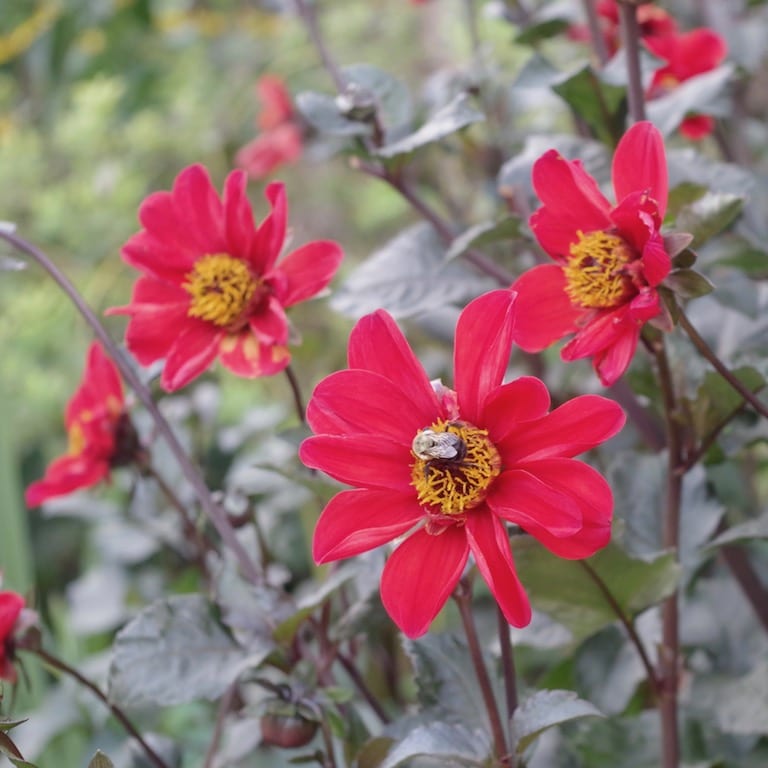March 18, 2019

WHY POLLINATORS?
The recent surge in scientific and popular interest in pollinators has spawned a new curiosity about the habits and cycles of the bees, moths, bats, hummingbirds, and other insects we had previously taken for granted. Bee colony collapse and the disappearance of monarch butterflies are topics once the province of scientists and entomologists but now in the popular press and news programs. Nurseries and garden centers are besieged by questions about what plants and practices will encourage pollinators.
“No pollinators – no food” is not just a catch phrase. Consider that all the fruits, vegetables, and grains we eat rely on pollinators, as do the plants for coffee and chocolate, and the list goes on. We at the top of the food chain have been the culprits but can be the force to reverse the decline.

SMALL AND SIMPLE STEPS
Pollinators are in decline because their habitats are being lost – whether to overdevelopment, toxic pesticides, or breeding of inhospitable display plants. Through education and small steps in public and private gardens we can begin to re-establish environments favorable to pollinators.
🐝Plant a wide variety of plants of different heights, colors and sizes.
🐝Plant native species that contain the pollen and nectar needed by native pollinators.
🐝Include host plants for caterpillars.
🐝Plant single flowers – new double flowers do not contain the nectar and pollen attractive to many bees.
🐝Create a habitat with some good nesting material like dry grass or dead wood – a perfect tidy garden does not provide a good home for bees.
🐝Eliminate pesticides whenever possible. Even organic pesticides can be toxic to pollinators.

WHAT DO WE DO AT THE CATHEDRAL GROUNDS AND GARDENS?
🦋We are approved by the Million Pollinator Garden Challenge as a member https://millionpollinatorgardens.org
🦋We are cautious in our use of pesticides.
🦋We have stationed tubes for the mason bees whose cocoons we placed in various trees, hoping they would nest and lay eggs after last year’s pollinating season, and hatch anew this spring. To read more about this project CLICK HERE.
🦋Our Upper Perennial Border in the Bishop’s Garden is alive with bees and other insects burrowing into the blossoms.
🦋This April our staff will plant a Pollinator Garden in cooperation with National Cathedral School to be a laboratory and welcoming environment for pollinators and students. Designed and planned by the 2018 All Hallows Guild Summer Interns, the garden will have a variety of perennials, grasses, and trees all attractive to different types of pollinators. Giant hyssop, Amsonia, Swamp milkweed, Butterfly weed, Aster, Coneflower, Bluebell, Big bluestem grass, Red Bud, Dogwood, Winterberry, and Spicebush are just some of the plants provided by All Hallows Guild that will welcome pollinators.

Flower Mart (May 3-4) will celebrate pollinators with a wide selection of friendly plants at Premier Plants, exhibits and resources from the Department of Agriculture, educational displays and brochures, and talks by horticulturists about how you can make your outdoor space part of the solution.



